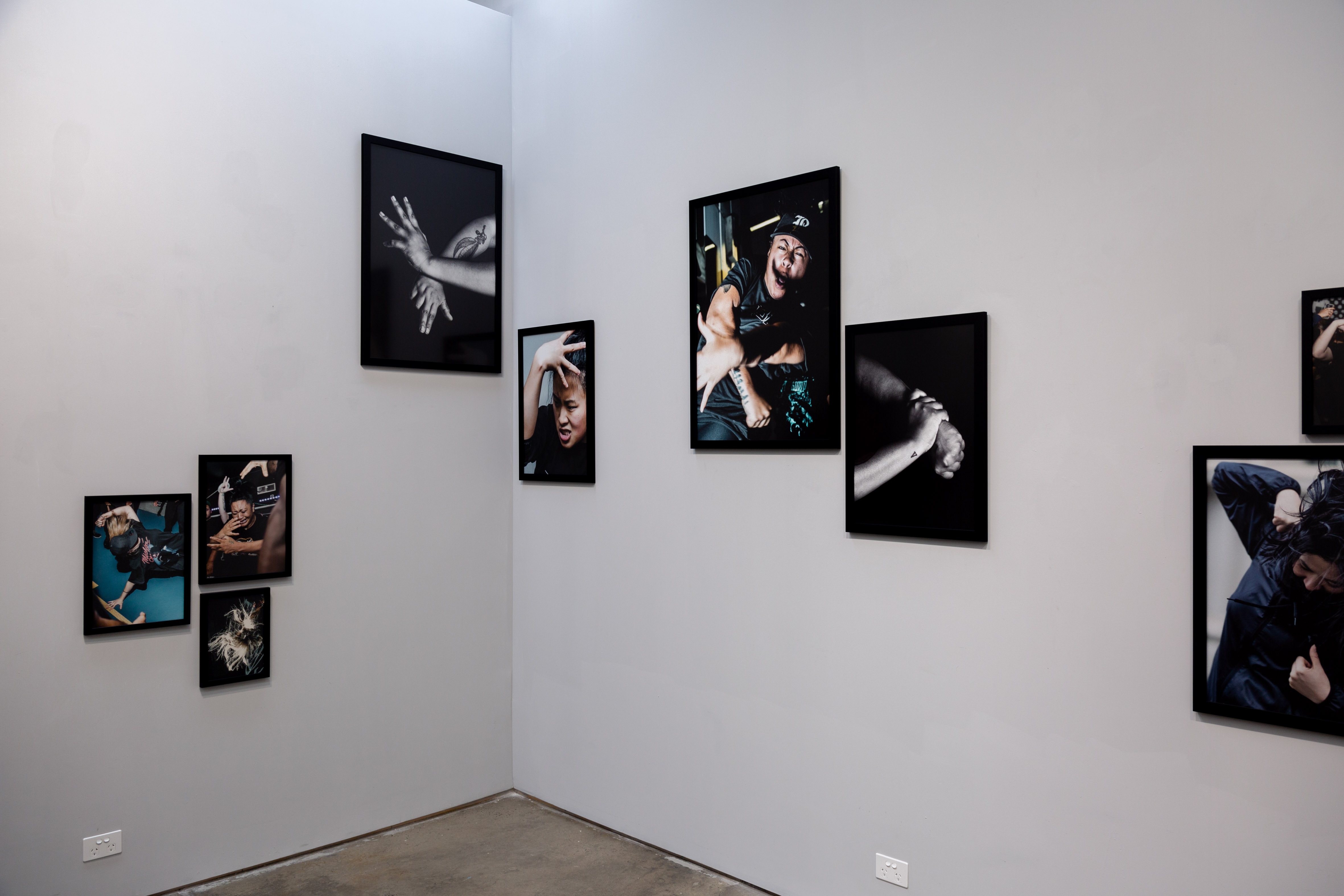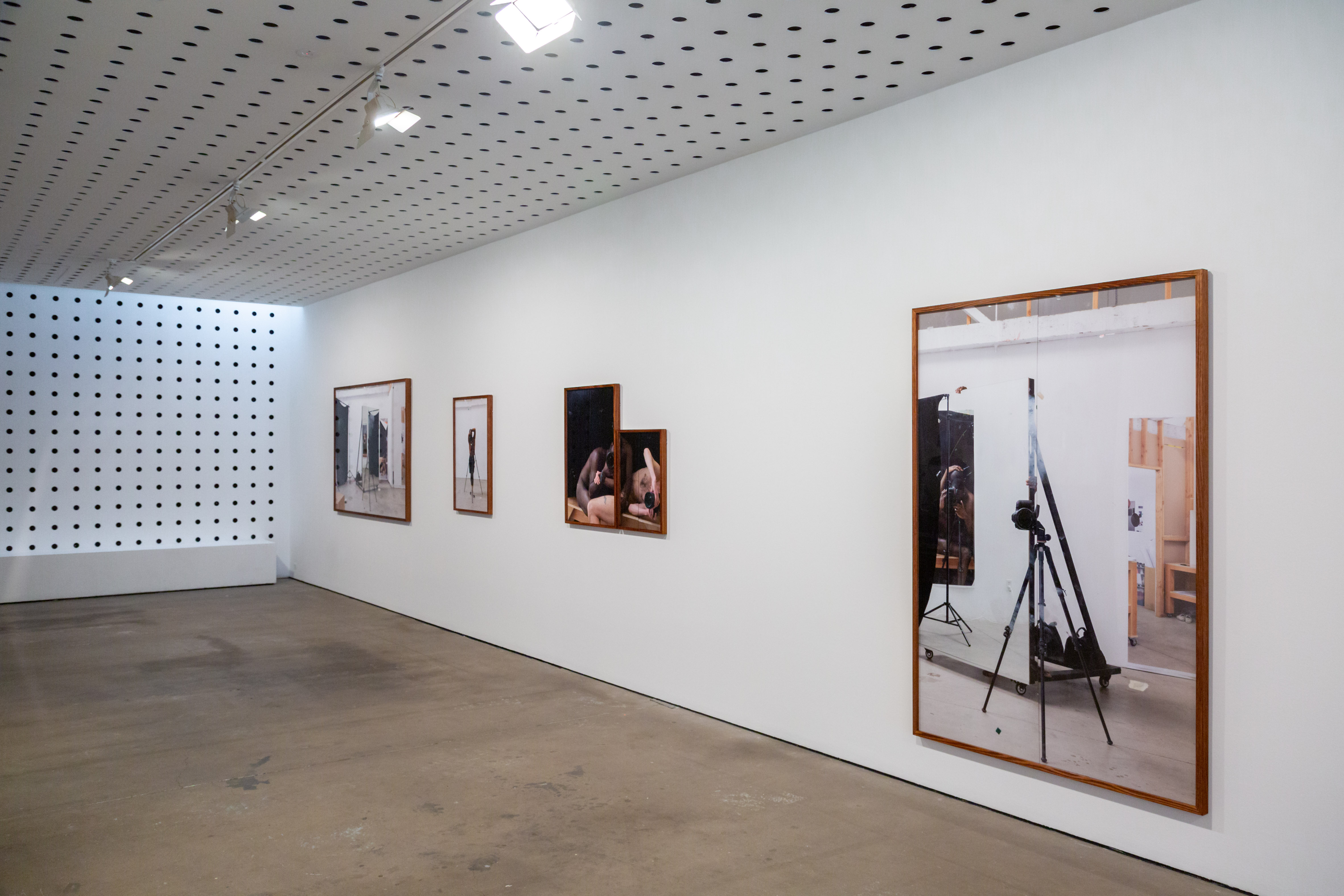The Huxleys at Photo 2022 © J Forsyth
As we approach the closing weekend of PHOTO 2022, Asia-Pacific Photobook Archive’s Isabella Capezio shares her highlights
Organised around the theme ‘Being Human’, PHOTO 2022 has activated Melbourne’s galleries and public spaces for the past three weeks. Impressive billboard-sized photographs dot the urban landscape – from the steps of Parliament House at the north end of Melbourne’s business district, to the banks of the Birrarung (Yarra River) that meanders through the city centre. Of note is Australian-based Ghanian photographer Richmond Kobla Dido’s Men Do Not Cry, which is mounted onto a building overlooking Collins Street. The photos are exhibited at a site where, 60 years ago, newly arrived migrant Helmut Newton set up his first photographic studio. Elsewhere, lightboxes of Poulomi Basu’s critical and powerful work, Blood Speaks: A Ritual of Exile, sit near the State Library of Victoria, while Christian Thompsons’ public exhibition of large scale prints and sound installation offers an alternate experience to the daily commuter.

One exhibition that caught my attention was New Photographers, a new initiative by PHOTO 2022 to feature emerging local photographers from Australia’s leading art colleges. Of note was Rachel Main’s work Session Queens, an interactive project that exists both online, and as a physical exhibition and performance. The show brings the energy and vibrations of the Australian and New Zealand Krump scene to the fore. The portraits and isolated hand gestures create an immediate, upfront and intense atmosphere. The trust Main built within these communities is revealed through tight cropping and intense portraits. One of the highlights of the festival was a live performance by the Krump community on opening night.
Another project that stood out from New Photographers was Jahkarli Romanis, who investigates technological perspectives of land and country through google earth renditions of the landscape. As the images fail to fully describe, categorise or explicate an experience, we are reminded of the enmeshment of mapping and the colonial gaze.
The second highlight for me was the Centre for Contemporary Photography’s suite of shows – Queering the Frame: Community, Time, Photography, curated by Brendan McLeary. The show features Australian artists Helen Grace, Samuel Hodge, The Huxleys, Brook Andrew, J Davies, and Shannon May Powell. And accompanying this, two smaller solo shows by international artists Paul Mpagi Sepuya and Martine Gutierrez.

These exhibitions crash together in playful, camp and smart new forms that champion making, improvisation, performance and the chaos that often gets overlooked in photography’s tendency towards outdated binary oppositions. Paul Mpagi Sepuya’s work is self-referential, exploratory, playful and sexy. His studio performances unsettle both traditional and contemporary methods of portraiture and self-portraiture. The collaboration, the bodily exchanges, and the showing of bodies with devices, screens, reflections, and surfaces reveal rich layers of intimacy and unease. The tensions of invitation, care, control and representation are well played out and beautifully crafted.
As we move towards new codes that redefine terms like ‘queer‘, the exhibition eminds us that being human is about being from and with other humans, shaped and reflected through and in bodies that have come before us and that stand before us. Curator Brendan McCleary asked photographer Helen Grace to re-examine her archive of photographs taken in the 1970s and 1980s that document ‘Amazon Acres’, a female-only commune in Northern New South Wales. Grace documents and frames the group and their happenings with detail and care. The work is an essential piece of Australian history that marks the women’s movement and reinforces the importance of community and its many forms. In the same exhibition, impressive wall-sized contact sheets by Brook Andrew display glimpses of queer communities in the 1990s, transporting the audience into the darkroom and reminding us of the importance of the tactile and physical processes of photographic making.
Elsewhere in the show, collaborative duo The Huxleys perform colourful tributes to the queer icons that informed their youth. In conversation with the other artists on show, these works delve into the multigenerational understanding of queerness in Australia. At the heart of this exhibition is perhaps Queer-ING, a process that it is always in flux and expanding.
The PHOTO 2022 festival is an ambitious model that allows institutions, galleries, commissioned artists and artist-run spaces the opportunity to advance photography’s position within art and public life. Photography is now a large part of what being human is, and with 90 free exhibitions featuring 123 artists thinking through a diverse range of ideas, it becomes evident that being human is nuanced, exciting and hard to describe.
PHOTO 2022’s final weekend be centred around a major photobook market on May 21st and 22nd hosted by Photography Studies College, and showcasing the Kassel Fotobook Award, the Aperture/Paris Photo Photobook Award, the Asia-Pacific Photobook Archive, and the Australian and New Zealand Photobook Awards. The photobook market will feature publishers and book makers from all over the world selling their wares, and will run alongside a series of book launches, talks, workshops, and reviews.
The post Highlights from Melbourne’s PHOTO2022 appeared first on 1854 Photography.
